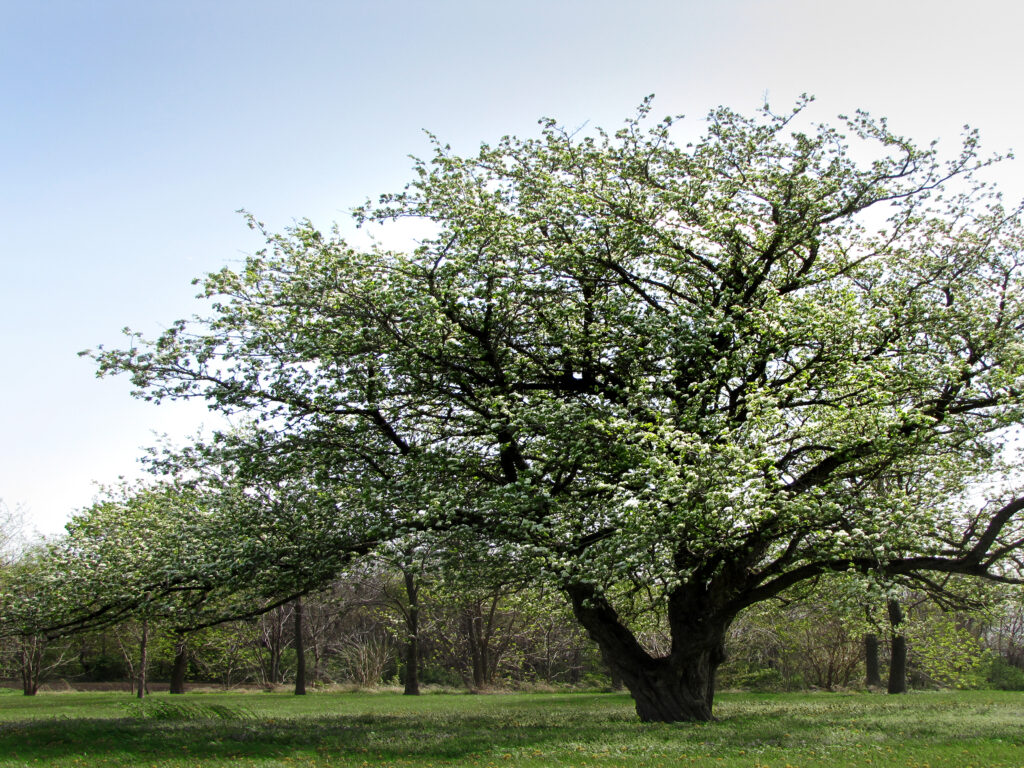
FEATURED TREE:
Hawthorns (Crataegus sp.)
I like to think of myself as skilled at tree identification, but I’m not sure I will ever become a true hawthorn expert beyond recognizing the most common native Crataegus species. Keying out a hawthorn requires a hand lens, a solid understanding of botanical terminology, and multiple trips to observe the specimen in different seasons to examine both flowers and fruit. Fortunately for the Arboretum, our small hawthorn collection has largely been curated with the help of one of the world’s leading hawthorn experts, Ron Lance. He literally wrote the book—Lance’s 2014 publication, Haws: A Guide to Hawthorns of the Southeastern United States, is the most comprehensive and taxonomically up-to-date guide available on this group of trees. Our collection currently includes 50 accessions, representing 30 of the 200+ North American hawthorn species. Hawthorns are found in temperate zones around the world, with potentially as many as 1,000 species! The total number of species varies depending on which taxonomist you follow. Only a handful of these species occur in Illinois, and just two occur spontaneously at Starhill Forest –the downy red haw (Crataegus mollis), one of the most widespread North American haws, and Washington haw (Crataegus phaenopyrum). The latter has a very scattered documented distribution and has been in cultivation for decades. It’s possible that our trees may have dispersed from cultivated trees decades ago.
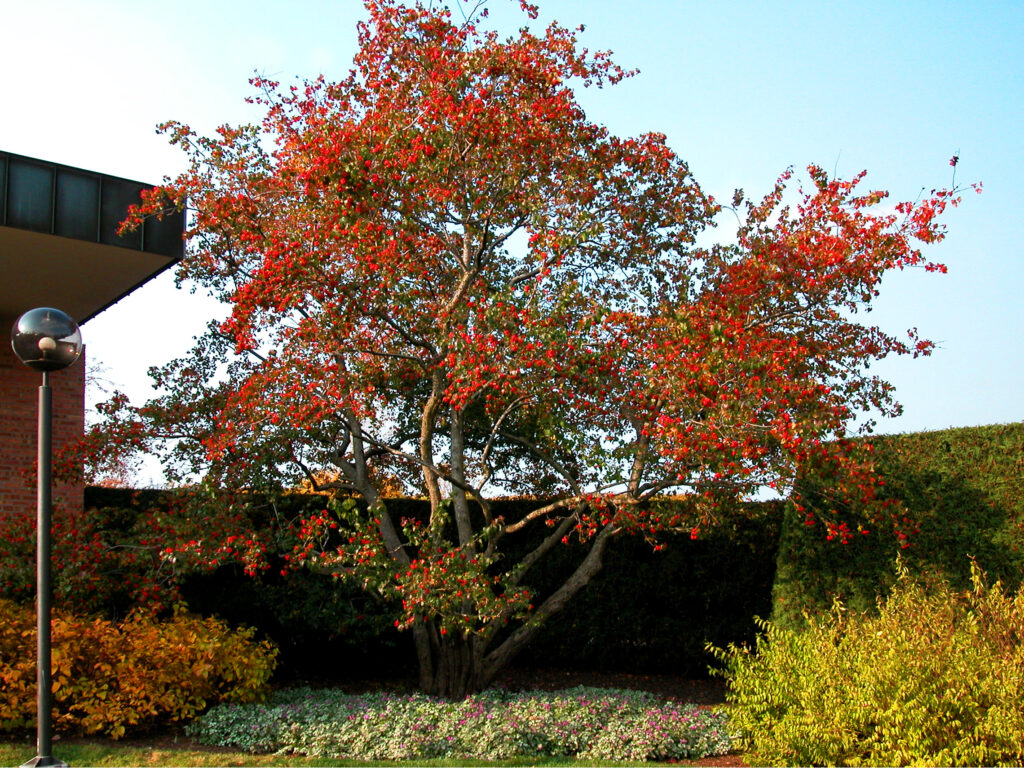
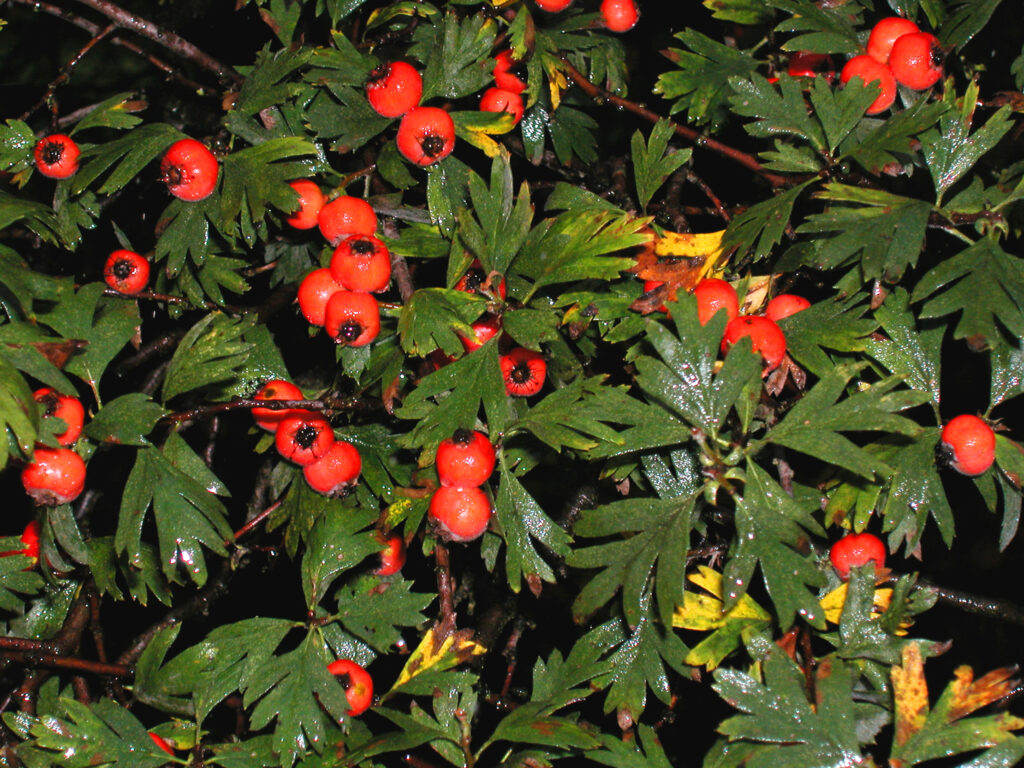
Hawthorns as a group deserve far more attention in horticulture and conservation. The bright white blossoms are abuzz with pollinators as soon as they open in early spring and as the tree matures, they develop picturesque form. The thorns and somewhat slow growth rate seem to be a bit of a deterrent in commercial horticulture, though you will a few selections like Crataegus viridis ‘Winter King’ available at traditional nurseries. Selections have been made that offer thornless varieties, resistance to the fungal diseases that often plague hawthorn foliage, compact or upright form, or particularly heavy flowers and fruit set. The tree’s small to medium size, beautiful flowers and fruit, and adaptability to a wide range of site conditions make for an excellent garden specimen.
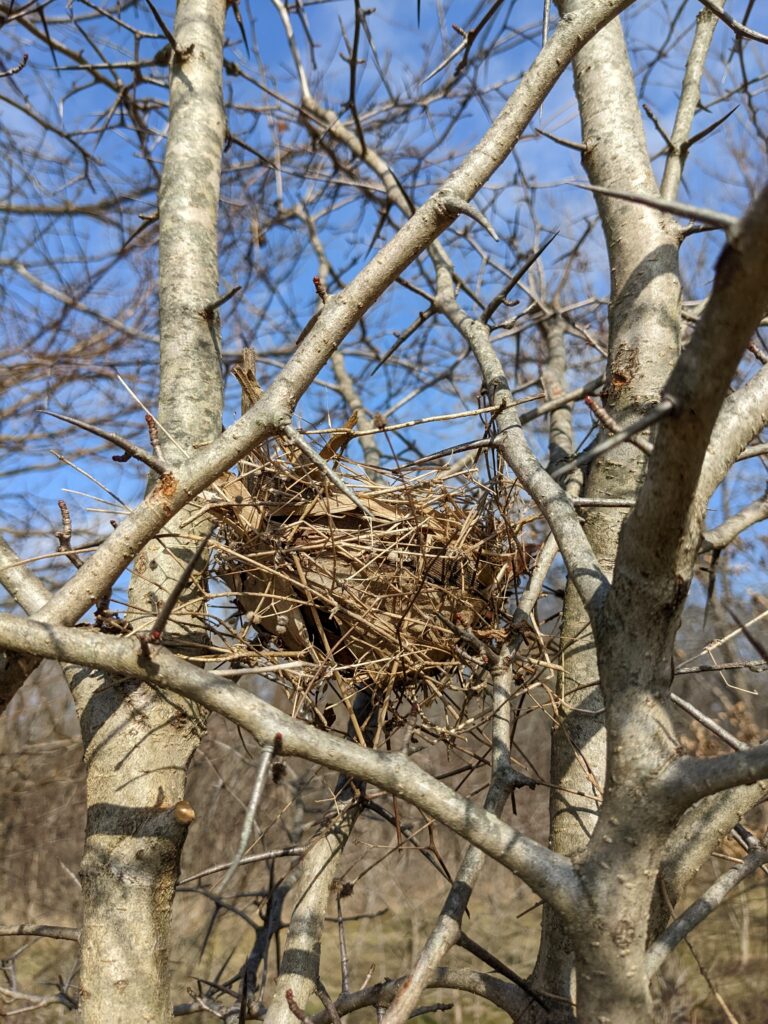
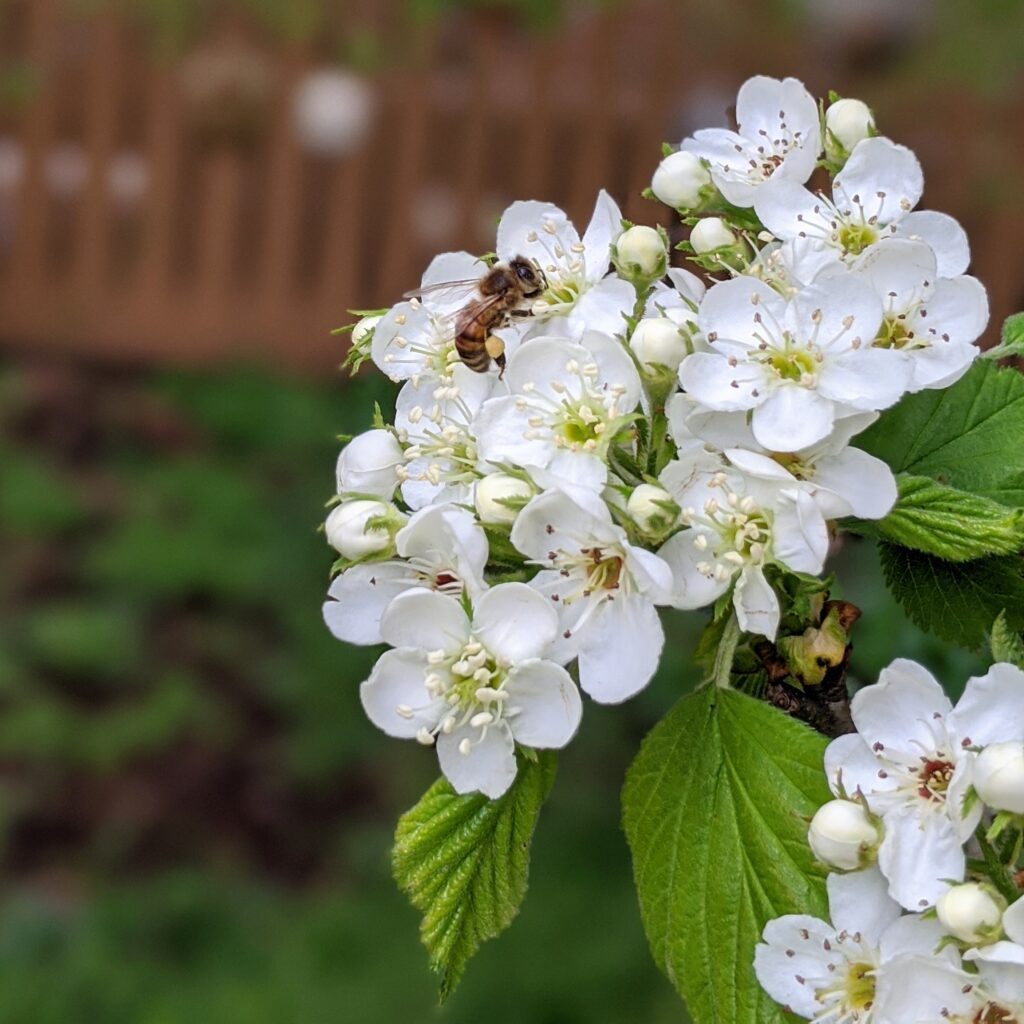
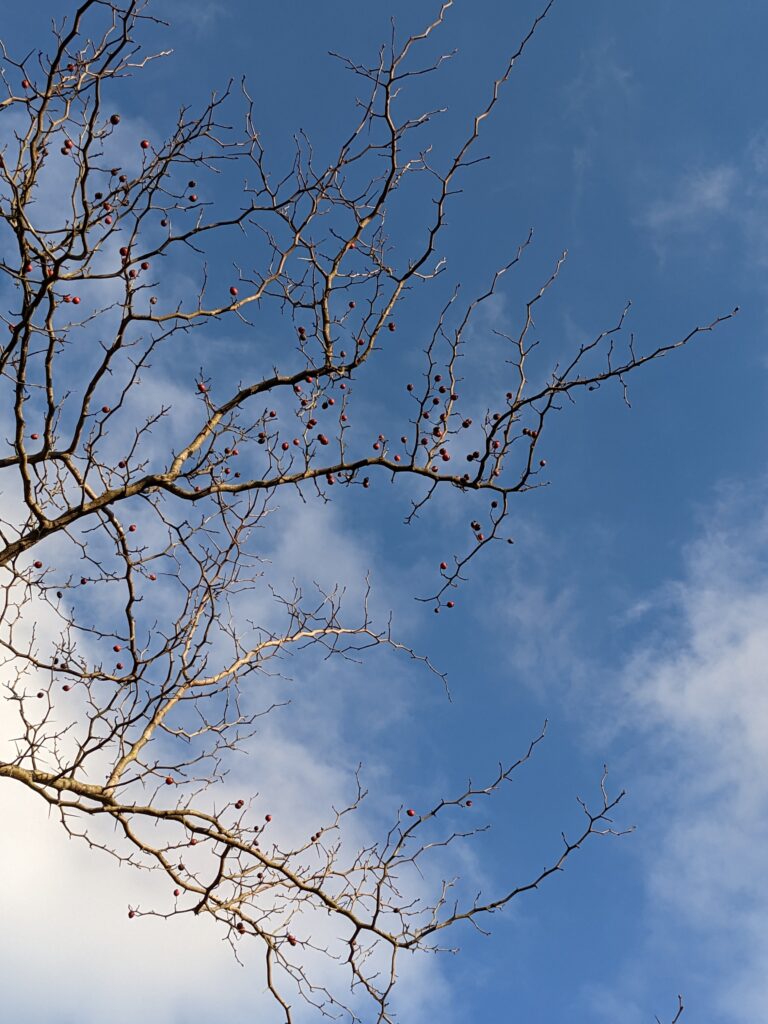
Locally, you might encounter a gnarly old hawthorn standing at the edge of the woods or in a remnant fencerow, where it has likely weathered decades of change. Unfortunately, these hardy survivors are becoming fewer as fencerows are cleared to make way for more cropland, and invasive species increasingly encroach on forested areas. These old hawthorns, when found, deserve to be preserved not only for their historical significance but also for the biodiversity they support.
Hawthorns play an important role in local ecosystems, providing food and shelter for a wide range of wildlife. A great variety of pollinators feed on their flowers, while the leaves, fruit, and bark offer sustenance to many species of insects, birds and small mammals. The dense branching structure offers excellent nesting habitat for many songbirds. Preserving these trees is essential for maintaining the diversity and habitat value they bring to our changing landscape.
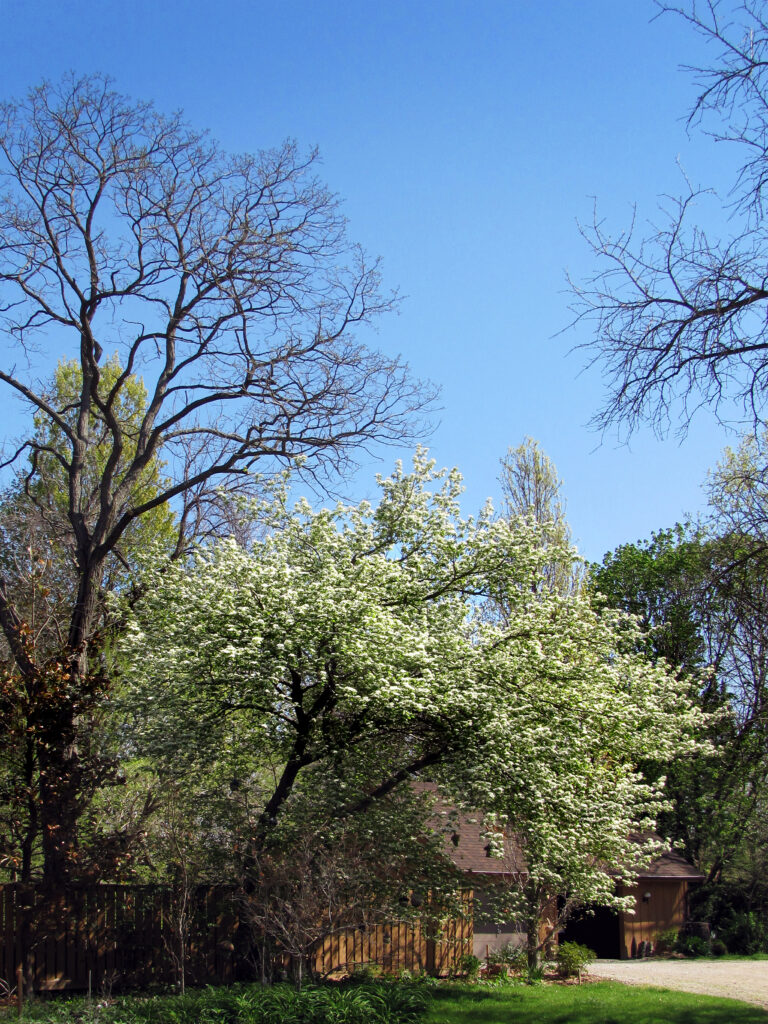
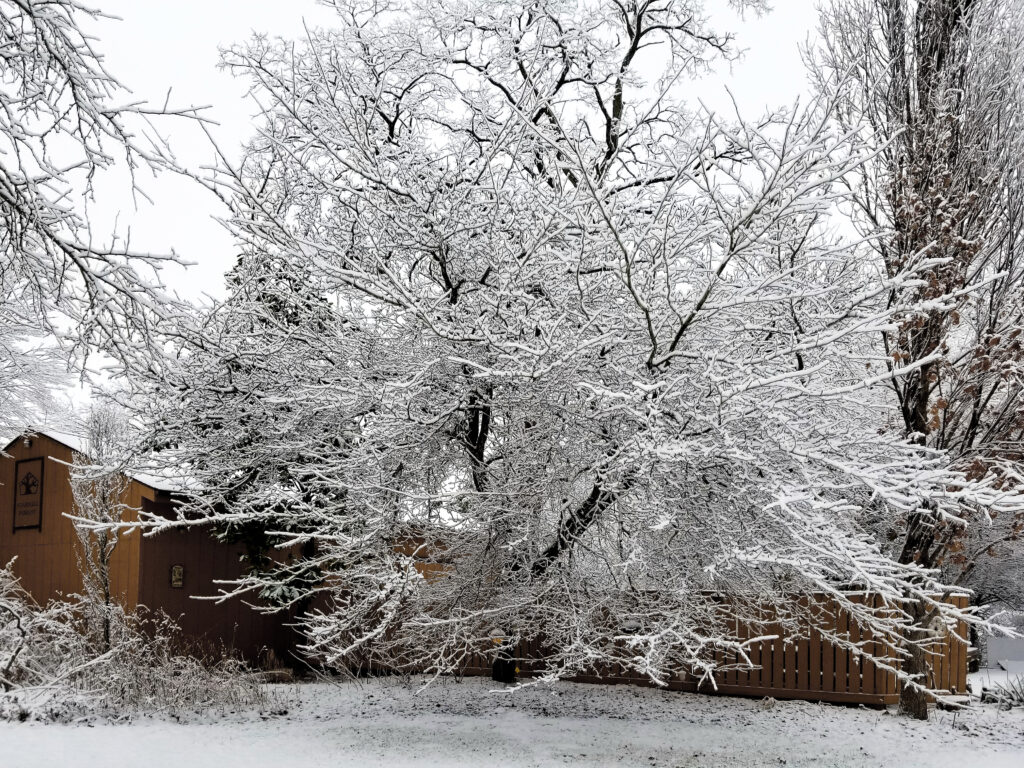
The majority of the Arboretum’s Crataegus collection is planted on a sunny, north-facing slope, where the flowers can be admired from a distance, and the various species compared side by side. Although many of these species originate in the milder climates of the southeastern United States and a range of habitats, most accessions are thriving in this common garden planting. Spring is certainly the optimal time to visit for the stunning floral display, but this time of year—fall—has its own unique appeal. It offers a great opportunity to observe which species show the most resistance to fungal diseases, retaining their foliage well into the season. It also offers a chance to appreciate the showy fruit and the unique branching habits of each specimen.
Crataegus crus-galli (#2009-045) is a stand-out for its foliage this time of year. This particular specimen sourced from North Carolina displays dense, glossy foliage that persists well into autumn, making it a clear winner in terms of disease resistance. Crataegus dispar (#2012-081) was another highlight on a recent walk, admired for its heavy fruiting, with brilliant red fruits that add striking color, along with its attractive, diminutive, rounded form.
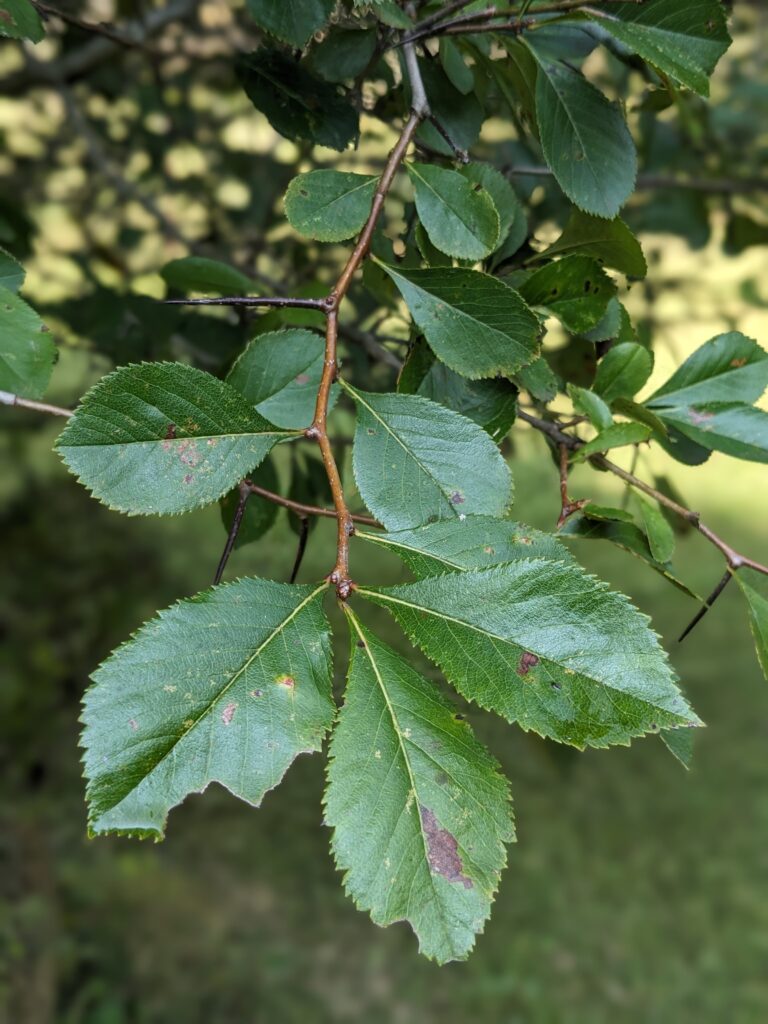
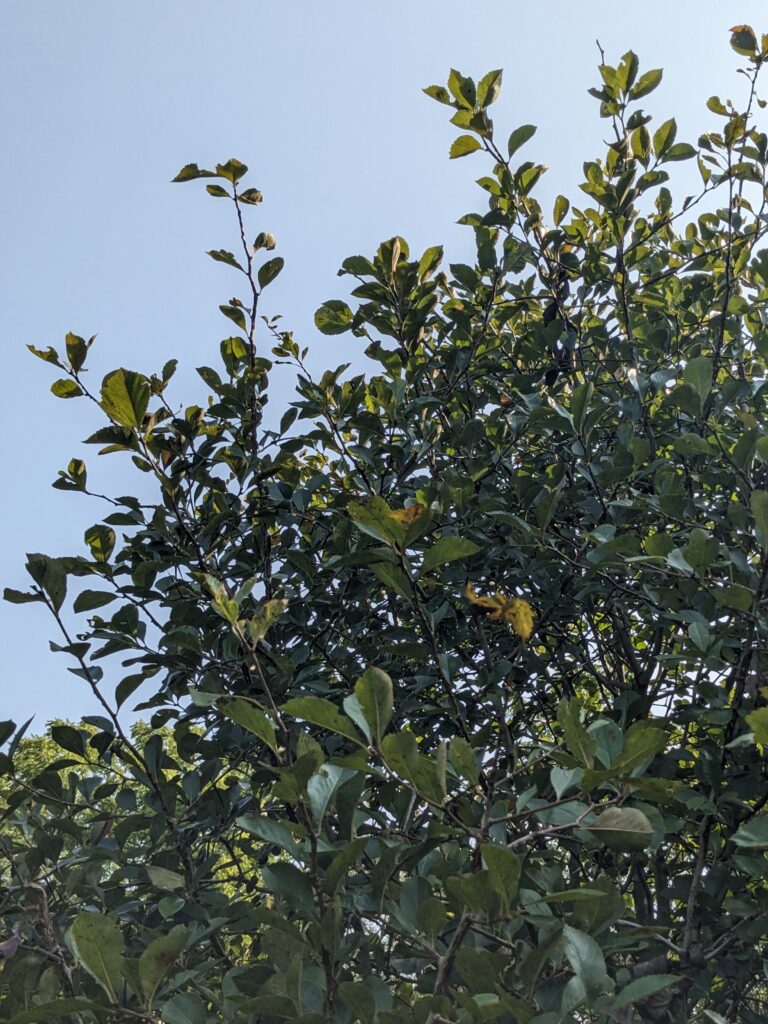
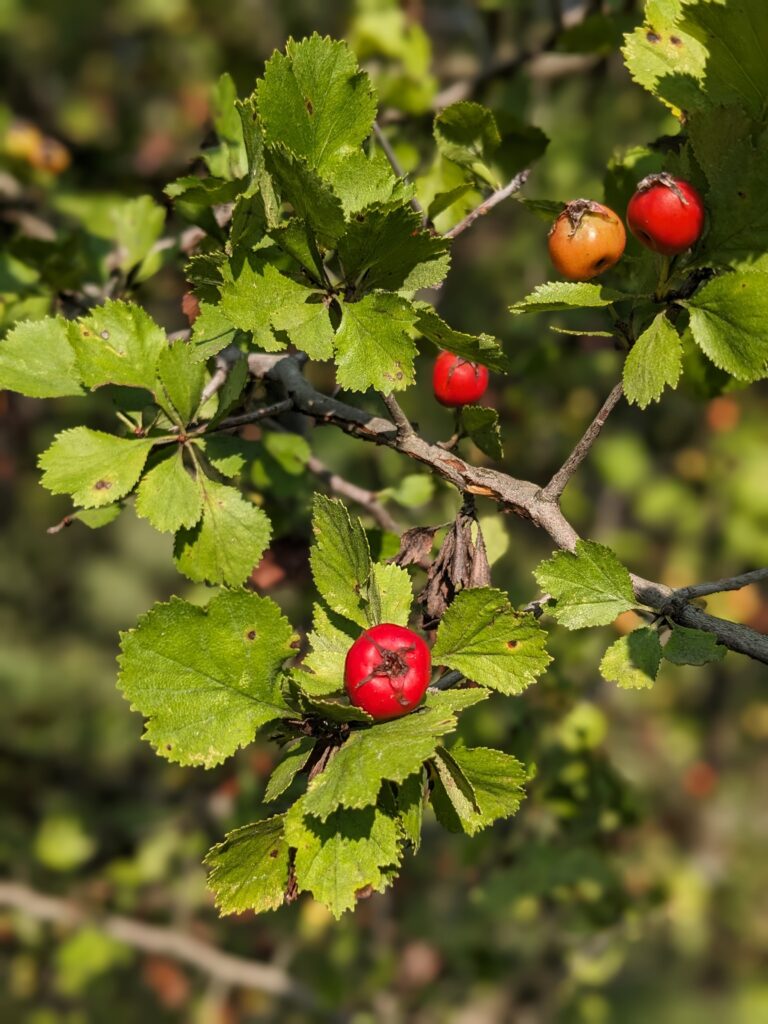
Another noteworthy species is Crataegus spathulata (#2012-086), particularly for its ornamental value. Its small, dense, semi-evergreen foliage is certainly appealing, and its exceptionally dense flower clusters provide an impressive spring display. However, what stood out the most was its exfoliating bark, which adds year-round interest, especially in winter when the structure and texture of the tree become more prominent.
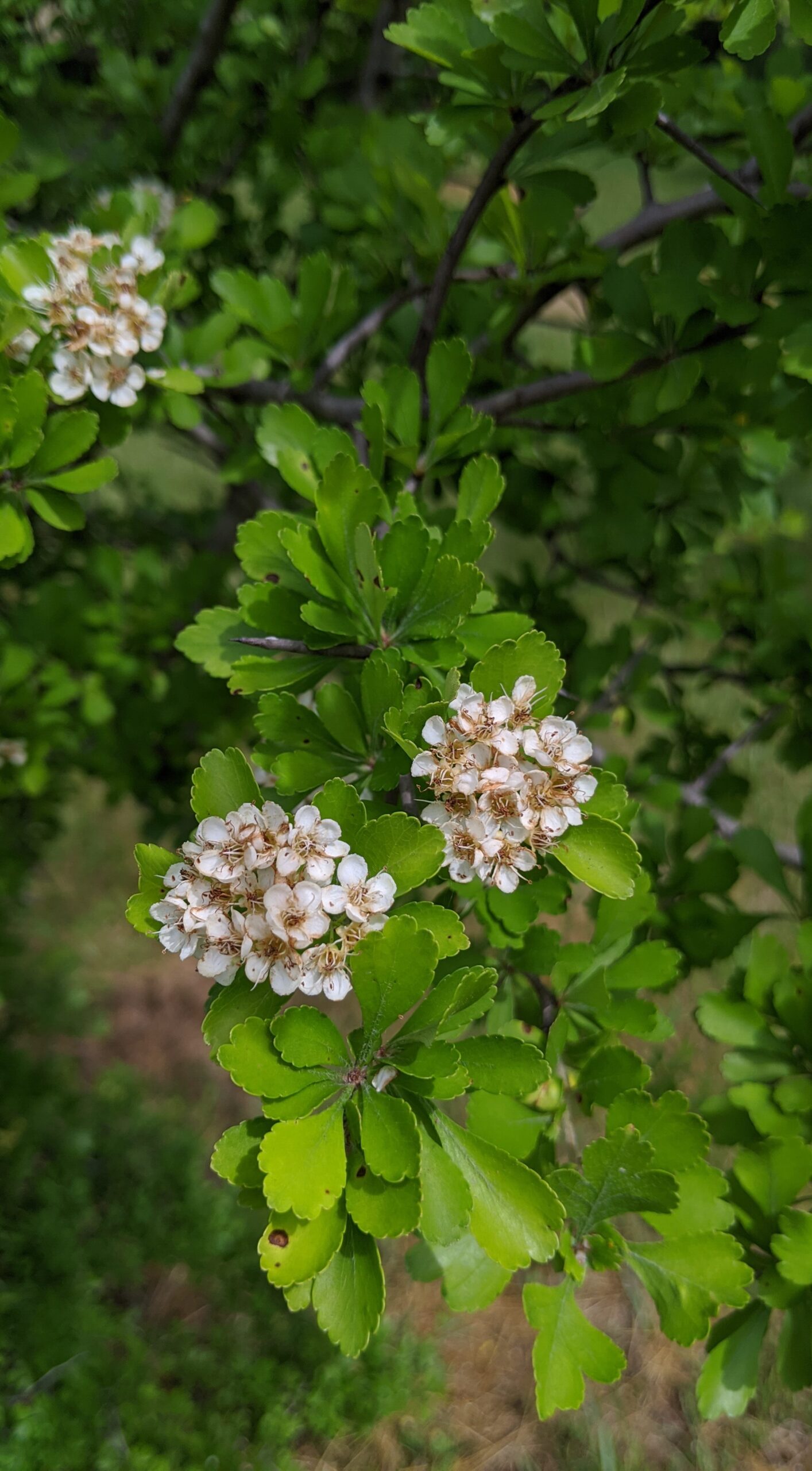
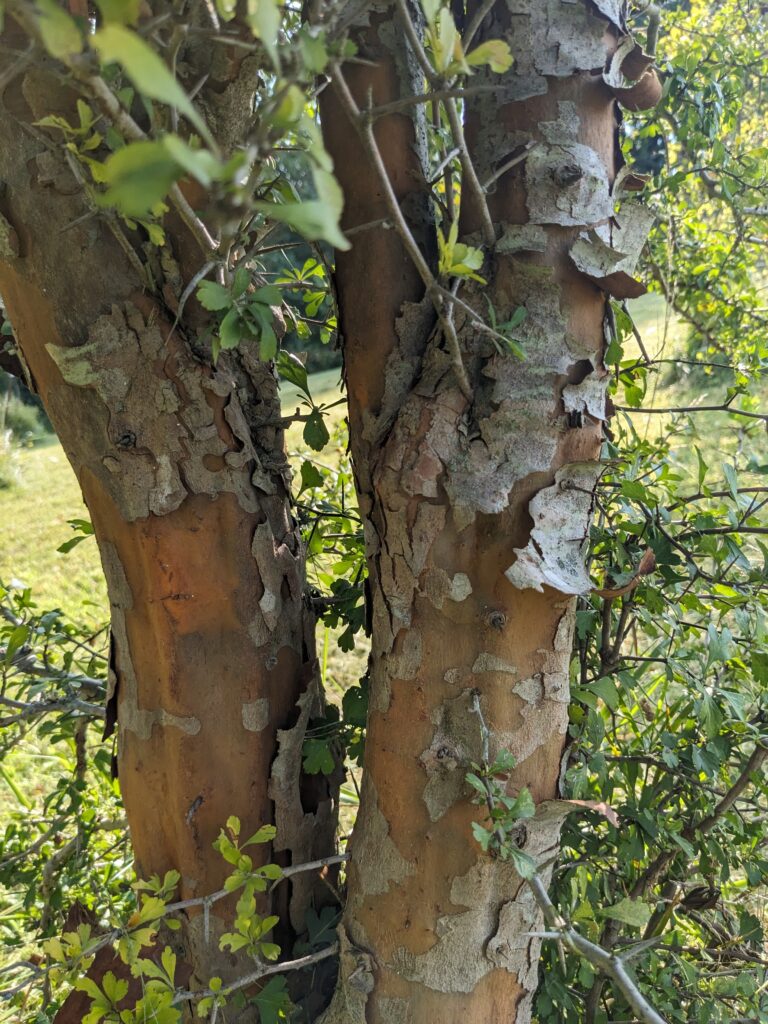
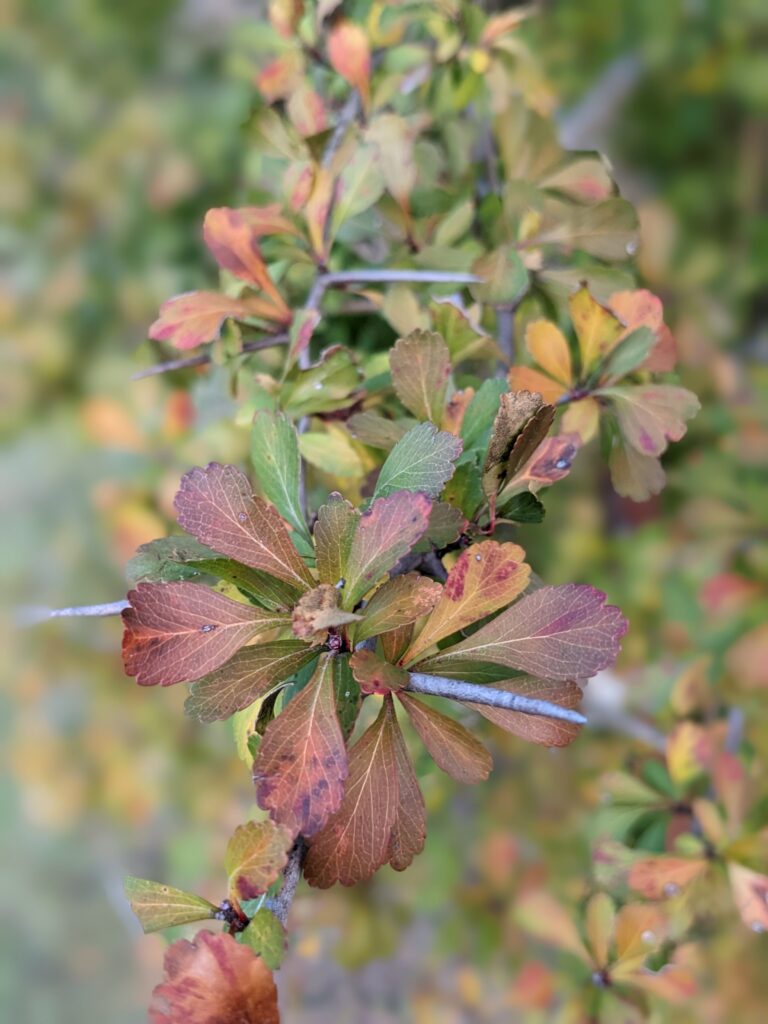
For more information on hawthorns, be sure to check out Guy Sternberg’s discussion of Crataegus mollis and other species in his latest book Native Trees of North America from the Rockies to the Atlantic. You can also plan a visit to experience our collection in person!
